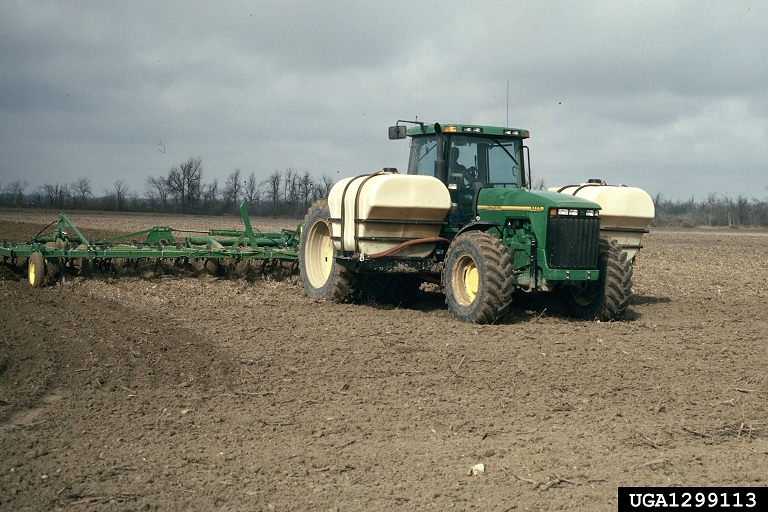Chapter 12: Herbicide Discovery and Classification
12.5 Describing Herbicides
There are different ways herbicides can be described and distinguished. A few of them are listed below. The next couple of sections will focus on a widely used classification system that categorizes herbicides based on their specific effects on susceptible plants.
- Selectivity – refers to whether the herbicide will injure nearly all plants (non-selective) or is more narrow in the plants it will effect (selective).
- Method of Application – describes different ways herbicides are applied to a cropping environment. Some examples here would include:
- Herbicides can be “broadcast” widely across the field or more precisely applied such as “banded” in the soil, between crop rows.
- Some herbicides are applied to the soil surface, while others are incorporated in through the use of tillage. Other herbicides are sprayed onto leaves of plants, “foliar” applied.
- Timing of Application – Herbicides can be applied at different times of the growing season.
- “Preplant” herbicides are applied to the soil surface of a field anywhere from a few weeks to more than a month before planting the crop.
- “Preemergence” herbicides are applied to the soil surface of a field after the crop is planted and yet before crop and weed seedlings emerge above the soil surface.
- “Postemergence” herbicides are applied after crop and weed seedlings appear and are growing.
- Carryover (persistence) – refers to how long the herbicide chemistry remains active and can affect susceptible plants. An herbicide with no residual effect will last only a short time, while one that does have a residual effect could negatively impact a crop planted months or even year(s) after application. Soil properties strongly influence herbicide carryover.
- Movement in plant describes how plants take in the herbicide. Some are “contact” herbicides, meaning that they will only damage the plant tissues where they land (ie leaves). Other herbicides are “systemic” meaning they are absorbed by the plant (ie through roots or leaf tissue) and the herbicide is transported through the plant, where it then interferes with a biochemical process in the plant. Contact herbicides kill only the plant parts contacted by the chemical, where-as systemic will kill all susceptible tissues.
- Applicator Requirements – Some herbicides can be purchased at your local hardware or box store, without any applicator license requirement. Others are “restricted” and require a pesticide applicators license to purchase and apply. These herbicides are stronger and/or more concentrated, thereby requiring greater awareness and knowledge to safely use them.

Review and Reflection